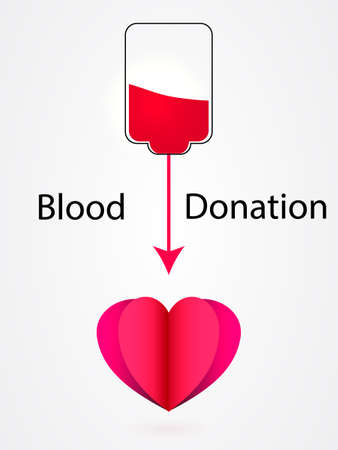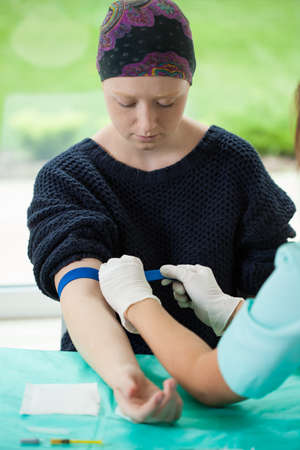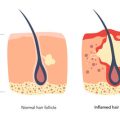Understanding Dysphagia in Head and Neck Cancer
Dysphagia, or difficulty swallowing, is a common challenge faced by many people who have been diagnosed with head and neck cancer. In the United States, this condition affects a significant number of patients during and after their cancer treatment. Understanding dysphagia is essential for both patients and caregivers as it plays a big role in daily life and overall well-being.
What is Dysphagia?
Dysphagia happens when there is trouble moving food or liquids from the mouth to the stomach. For people with head and neck cancer, this problem can be caused by tumors, surgery, radiation, or chemotherapy that impact the muscles and nerves involved in swallowing.
How Common is Dysphagia in Head and Neck Cancer Patients?
| Stage of Treatment | Estimated Prevalence of Dysphagia |
|---|---|
| During Treatment | Up to 80% |
| After Treatment (First Year) | 40-60% |
| Long-Term Survivors | 20-30% |
The numbers show that dysphagia is very common, especially during active cancer treatment. Even after treatment ends, many Americans continue to face swallowing difficulties for months or years.
The Impact on Quality of Life in the U.S.
Dysphagia can make eating and drinking uncomfortable or even dangerous. This may lead to:
- Poor nutrition and weight loss
- Dehydration
- Social isolation (avoiding meals with family or friends)
- Anxiety about choking or coughing during meals
- Increased risk of pneumonia due to food or liquid entering the lungs (aspiration)
In the United States, where eating together is an important part of social life and culture, these challenges can make it hard for patients to stay connected with loved ones. Recognizing these difficulties is the first step toward finding solutions and improving quality of life for those living with head and neck cancer-related dysphagia.
2. Medical Management and Multidisciplinary Teams
Dysphagia is a common complication for people with head and neck cancer, especially during and after treatment. In American cancer centers, managing dysphagia is not the job of just one professional—it takes a whole team. This multidisciplinary approach helps patients get the best care possible and improves their quality of life.
The Team Approach in U.S. Cancer Centers
In the United States, cancer centers typically bring together specialists from different fields to address all aspects of patient care. Here’s how each expert plays a role:
| Healthcare Professional | Main Role in Dysphagia Care |
|---|---|
| Oncologist | Leads the overall cancer treatment plan (surgery, radiation, chemotherapy) and monitors how treatments affect swallowing function. |
| Speech-Language Pathologist (SLP) | Assesses swallowing ability, provides therapy exercises, and educates patients about safe eating strategies. |
| Nutritionist/Dietitian | Helps create meal plans that meet nutritional needs while considering swallowing difficulties; offers tips on food textures and supplements. |
| Nurse | Coordinates care, educates patients about medications and tube feedings, monitors for aspiration or infections. |
| Physical Therapist/Occupational Therapist | Works on posture, positioning, and daily activities to make eating safer and more comfortable. |
| Social Worker/Psychologist | Supports emotional well-being and helps patients access community resources or support groups. |
How These Professionals Work Together
The team meets regularly to discuss each patient’s progress. For example, if a speech-language pathologist notices new swallowing problems, they might talk with the oncologist to see if treatment changes are needed. Nutritionists and SLPs often collaborate to adjust diets so patients get enough calories without risking choking. Nurses help keep everyone updated on daily concerns or urgent symptoms.
Benefits for Patients in the U.S.
This collaborative approach means that challenges like weight loss, dehydration, or aspiration can be caught early and managed quickly. It also supports mental health by connecting patients with counseling or support groups—a big part of care in American cancer centers.

3. Assessment Techniques and Screening Tools
In the United States, early and accurate assessment of dysphagia (swallowing difficulties) is crucial for patients with head and neck cancer. Rehabilitation teams at U.S. cancer centers rely on both clinical and instrumental methods to evaluate swallowing function, helping them create effective treatment plans tailored to each patient’s needs.
Common Clinical Assessment Methods
Speech-language pathologists (SLPs) typically start with a bedside or clinical swallow evaluation. This involves observing the patient eat or drink different food textures and liquids while monitoring for signs of aspiration (food or liquid entering the airway), coughing, voice changes, or difficulty swallowing. These assessments are non-invasive and provide valuable initial information.
Standardized Screening Tools
Several screening tools are commonly used across American cancer centers to quickly identify patients at risk for dysphagia:
| Screening Tool | Description | When Used |
|---|---|---|
| Massey Bedside Swallowing Screen | A quick screening tool that assesses multiple aspects of swallowing safety and efficiency. | Initial evaluation in hospital settings |
| Yale Swallow Protocol | A simple water swallow test designed to detect aspiration risk. | Early detection, often within 24 hours of admission or post-surgery |
| EAT-10 Questionnaire | A self-reported survey where patients rate their perceived swallowing difficulties. | Ongoing monitoring and patient self-assessment |
Instrumental Evaluations
If clinical assessments suggest swallowing problems, more advanced tests may be needed. These instrumental evaluations offer a detailed view of the swallowing process:
| Instrumental Test | Description | Key Benefits |
|---|---|---|
| Modified Barium Swallow Study (MBSS) | The patient swallows foods/liquids mixed with barium while X-rays capture real-time images of the mouth and throat. | Visualizes aspiration, residue, and movement of structures during swallowing. |
| Fiberoptic Endoscopic Evaluation of Swallowing (FEES) | A small camera is gently passed through the nose to watch food/liquid move through the throat. | No radiation exposure; provides color video images; can be done at bedside. |
| Manometry | Sensors measure pressure inside the esophagus as the patient swallows. | Assesses strength and coordination of muscles involved in swallowing. |
The Role of Multidisciplinary Teams in Assessment
Dysphagia assessment in American cancer centers often involves a team approach. SLPs work closely with oncologists, dietitians, nurses, and radiologists to interpret results and plan care. Family members may also be involved to provide support and observations from home, ensuring a holistic view of each patient’s challenges and progress.
4. Rehabilitative Interventions and Evidence-Based Practices
Dysphagia, or difficulty swallowing, is a common challenge for individuals with head and neck cancer, especially after surgery, radiation, or chemotherapy. In the United States, cancer centers use a variety of rehabilitation strategies tailored to meet each patients unique needs. These approaches are grounded in evidence-based practice and delivered by multidisciplinary teams including speech-language pathologists (SLPs), occupational therapists, dietitians, and oncologists.
Key Rehabilitation Strategies Used in U.S. Cancer Centers
U.S. clinical practice emphasizes early intervention and individualized care plans. The following table highlights some of the most widely used rehabilitative interventions for dysphagia among head and neck cancer patients:
| Intervention | Description | Example from U.S. Practice |
|---|---|---|
| Swallowing Exercises | Targeted exercises to strengthen muscles involved in swallowing. | Mendelsohn maneuver, effortful swallow, Shaker exercise. |
| Diet Modifications | Altering food texture and liquid consistency to reduce aspiration risk. | Puree diets, thickened liquids prescribed by SLPs or dietitians. |
| Compensatory Techniques | Strategies to improve safety during meals and swallowing. | Chin tuck posture, head turn technique while swallowing. |
| Neuromuscular Electrical Stimulation (NMES) | Use of electrical stimulation to activate swallowing muscles. | VitalStim therapy offered in many outpatient rehab clinics. |
| Patient & Family Education | Teaching about safe eating habits and at-home exercises. | Handouts, video tutorials, telehealth follow-ups for ongoing support. |
| Percutaneous Endoscopic Gastrostomy (PEG) Support | Nutritional support via feeding tube when oral intake is unsafe. | Nurse and dietitian-led PEG management programs. |
The Role of Multidisciplinary Teams
American cancer centers prioritize team-based care. Speech-language pathologists lead swallowing rehabilitation efforts but work closely with other specialists to address nutrition, pain management, dental issues, and psychological support. This collaborative approach ensures that patients receive holistic care throughout their treatment journey.
Incorporating Technology in Rehabilitation
Many U.S. centers utilize technology such as videofluoroscopic swallow studies (VFSS) and fiberoptic endoscopic evaluation of swallowing (FEES) to assess swallowing function in real time. Telehealth services have also become popular for remote coaching and follow-up sessions, making it easier for patients living far from urban cancer centers to access specialized care.
Cultural Sensitivity in Dietary Recommendations
Cancer centers across the U.S. recognize the importance of culturally appropriate dietary planning. Dietitians often tailor recommendations based on patients backgrounds—whether that means accommodating Southern comfort foods or Hispanic cuisine—while still maintaining safe textures and consistencies for those with dysphagia.
5. Patient Education, Support, and Community Resources
For patients dealing with dysphagia and head & neck cancer in the U.S., education, support, and access to community resources are crucial parts of the rehabilitation process. Understanding what to expect, how to manage daily challenges, and where to find help can make a big difference in recovery and quality of life.
Educational Initiatives for Patients and Families
Most U.S. cancer centers provide educational programs designed to empower both patients and their families. These programs may include:
- Workshops: Covering topics like safe swallowing techniques, nutrition tips, and managing side effects of treatment.
- Printed Guides & Online Videos: Easy-to-follow instructions on preparing food safely or performing swallowing exercises at home.
- One-on-One Counseling: Speech-language pathologists (SLPs) often provide individualized training tailored to each patient’s needs.
Support Groups
Joining a support group can help patients and their families feel less alone. These groups offer emotional encouragement, practical advice, and the chance to share experiences with others facing similar challenges. Many cancer centers host regular meetings, both in person and online, making them accessible nationwide.
Common Types of Support Groups
| Type of Group | Description | How to Join |
|---|---|---|
| Cancer-Specific Support Groups | Focused on head & neck cancer survivors | Contact local hospitals or American Cancer Society |
| Dysphagia Support Groups | Centered on swallowing difficulties from any cause | Check with SLPs or national organizations like National Foundation of Swallowing Disorders (NFOSD) |
| Online Communities | Forums and virtual meetups open 24/7 for support | Websites like CancerCare or Inspire.com |
Community Resources Available in the U.S.
A wide range of community resources can assist with everything from transportation to financial aid. Here are some key resources:
- Cancer Resource Centers: Many hospitals have centers offering free counseling, information sessions, and access to wigs or prostheses.
- Nutritional Assistance Programs: Registered dietitians work with patients to develop meal plans that are safe and nutritious for those with swallowing issues.
- Transportation Services: Non-profits like the American Cancer Society may offer rides to medical appointments for those who need it.
- Palliative Care Services: For ongoing symptom management and emotional support during recovery.
- Financial Counseling: Assistance in navigating insurance or finding grants for uncovered medical expenses.
Main Organizations Supporting Patients Nationwide
| Organization Name | Main Services Provided | Website/Contact Info |
|---|---|---|
| American Cancer Society (ACS) | Counseling, support groups, transportation assistance, education materials | cancer.org |
| CancerCare | Counseling, financial assistance, online groups, educational workshops | cancercare.org |
| The National Foundation of Swallowing Disorders (NFOSD) | Dysphagia support groups, education resources, webinars for patients and caregivers | nfosd.com |
| SPOHNC (Support for People with Oral and Head and Neck Cancer) | Pamphlets, support group directory, survivor stories, helpline | spohnc.org |
Navigating Recovery Together
No one has to go through dysphagia and head & neck cancer alone. By taking advantage of educational opportunities, joining supportive communities, and reaching out to available resources across the U.S., patients and families can navigate the journey toward recovery with greater confidence and hope.


